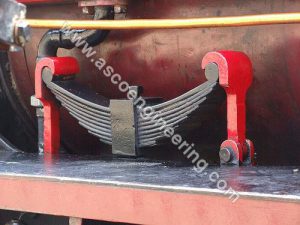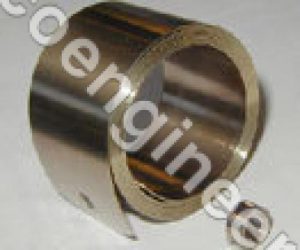Introduction:
Springs are an essential component in many industrial applications, ranging from automotive to aerospace. Springs are used for storing energy, absorbing shocks, and maintaining force or pressure. Among the many types of springs, industrial springs are commonly used in manufacturing and production processes. This article will explore the basics of industrial springs, their types, manufacturing process, and their applications in various industries.
Types of Industrial Springs:
There are several types of industrial springs, each designed for specific applications. Some common types of industrial springs are:
- Compression Springs:
Compression springs are the most common type of industrial spring. They are designed to resist compression and return to their original position when the force is removed. These springs are commonly used in automotive suspension systems, industrial machinery, and medical equipment.
- Extension Springs:
Extension springs are designed to stretch and return to their original position when the force is removed. These springs are commonly used in garage doors, trampolines, and industrial machinery.
- Torsion Springs:
Torsion springs are designed to resist twisting and return to their original position when the force is removed. These springs are commonly used in industrial machinery, garage doors, and various other applications.
- Constant Force Springs:
Constant force springs are designed to provide a constant force over a certain range of movement. These springs are commonly used in retractable pens, tape measures, and other devices that require a constant force.
Manufacturing Process of Industrial Springs:
The manufacturing process of industrial springs depends on the type of spring being produced. However, there are some common steps that are followed in the manufacturing process of industrial springs:
- Material Selection:
The first step in the manufacturing process is selecting the right material for the spring. The material selection depends on the type of spring being produced, the application, and the required properties of the spring.
- Wire Forming:
The selected material is then formed into wire of the desired diameter. The wire forming process is critical as it affects the final dimensions and properties of the spring.
- Coiling:
The wire is then coiled around a mandrel to the required number of turns and diameter. The coiling process is also critical as it determines the pitch and direction of the spring.
- Heat Treatment:
The coiled wire is then heat-treated to give it the desired mechanical properties. The heat treatment process involves heating the wire to a specific temperature and then cooling it down to room temperature.
- Finishing:
The final step in the manufacturing process is finishing the spring. The spring is cut to the required length and the ends are ground or flattened to provide a smooth surface.
Applications of Industrial Springs:
Industrial springs find applications in various industries. Some of the common applications of industrial springs are:
- Automotive Industry:
Springs are extensively used in the automotive industry, including suspension systems, braking systems, and clutch systems.
- Aerospace Industry:
Springs are used in the aerospace industry for various applications, including landing gears, control systems, and engine components.
- Medical Industry:
Springs are used in the medical industry for various applications, including medical devices, implants, and surgical instruments.
- Industrial Machinery:
Springs are used in various industrial machinery applications, including compressors, pumps, and heavy equipment.
Conclusion:
In conclusion, industrial springs are an essential component in many industrial applications. The manufacturing process of industrial springs is critical to ensure the desired mechanical properties and dimensions of the spring. The applications of industrial springs are diverse and range from automotive to aerospace. Understanding the basics of industrial springs is essential for anyone working in the manufacturing or engineering industry.





